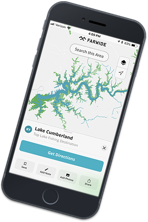Around the early 20th Century, the population of ducks declined drastically due to excessive commercial hunting and agricultural activities. The Federal Duck Stamp Act or the Migratory Bird Hunting Stamp Act was passed by the Government in 1934. The Act was seen as a phenomenal step in Duck Conservation.
Today, the waterfowl/Duck hunting regulations are enlisted under an international treaty, with frameworks designed specifically for each Flyway (Mississippi, Atlantic, Mountain and Pacific).
Duck season is the much-awaited period for outdoor sports activity in the US. Different states design their specific seasons in accordance with the migration timings and hunter preferences. The factor that largely affects when and which species you will get to hunt is the state you would be hunting in.
The regulations and dates vary across states. During these seasons, natural habitats are flush with waterfowl and migratory species. Hunters from all over the world head for these habitats to find ducks and other species in a single session. At Farwide, we have put together the latest information for duck season 2020 – 2021, to help you plan the most memorable Duck Hunting Trip.
The Types Of Ducks You Can Hunt Across US
A variety of ducks can be hunted in North America. The most popular varieties are –
| Mallards The most commonly found duck in Northern America. The male mallards usually have a dark green head and white collar. | |
| Canvasback A Canvasback is largely found in North America. It’s a diving duck with a long and sloping black bill. | |
| Redhead A diving duck with a reddish-brown head as its name suggests. Another common duck species in North America | |
| Black Duck Black Duck has black plumage. It is found commonly in North America. | |
| Pintail A pintail can be identified by its pointed tail. It’s a popular migratory duck. | |
| Gadwall A freshwater duck that is brownish-gray in color. Gadwall can often be spotted across Eurasia and North America. | |
| Harlequin Duck A Harlequin is usually found in the Arctic and North Pacific zones. It is a small duck that prefers fast-flowing streams. A male Harlequin usually has grayish-blue plumage with bold white markings. | |
| Teal A teal is a small duck that thrives in freshwater. A greenish band on the wing that is easily prominent in flight is a unique feature of the Teal. | |
| Wood Duck A tree-nesting duck commonly found in North America. The male Wood Duck has vibrantly colored plumage. | |
| Shoveler A Shoveler is a dabbling duck with a long and broad bill. | |
| Long-Tailed Duck It is a marine diving duck that thrives well in Arctic Eurasia and North America. A male Long Tailed Duck has very long tail feathers, which accounts for its name. It has white plumage. | |
| Scaup A Scaup is a diving duck easily found in Eurasia, North America, and New Zealand. The male of Scaup has a black head with a green or purple gloss. |
Rules and Regulations
Ducks and all Migratory birds are considered to be a national resource protected under the Migratory Bird Treaty Act. Duck Hunting is an extremely regulated sport with several restrictions in an endeavor to conserve the duck population, protect landowner rights and hunter interests.
All duck and waterfowl hunters are mandatorily required to purchase a hunting license. The hunters have strict limits in terms of –
The Daily Bag Limit – Bag Limit is the maximum numbers of each species that can be taken in one day.
Possession Limit – It is the maximum number of birds a hunter can possess in total, in field, at home or in storage.
Different states have their own seasons, curated in accordance to Federal regulations, birds and species available and hunter preferences. You can not hunt during closed seasons and beyond the Shooting hours even during Open Season. Farwide has all the resources and information to help you understand the regulations and Season timings in your area.
Here are the season dates for top states you must visit for Duck Hunting in the US –
| State | Approximate Season/ Date | Details |
| Nebraska | Oct to Jan | Get Current Dates and Regulations |
| Minnesota | Sep to Dec | Get Current Dates and Regulations |
| Maryland | Oct and Nov, Jan | Get Current Dates and Regulations |
| North Dakota | Dec to Jan | Get Current Dates and Regulations |
| Mississippi | Nov to Dec | Get Current Dates and Regulations |
| Illinois | Oct to Dec, Jan | Get Current Dates and Regulations |
| Arkansas | Nov to Dec | Get Current Dates and Regulations |
| Louisiana | Nov to Jan | Get Current Dates and Regulations |
| Alberta | Oct to Feb | Get Current Dates and Regulations |
| Texas | Nov to Jan | Get Current Dates and Regulations |
| Other states | Visit search.farwide.com for information on other states |
Top 10 places to Hunt Ducks this Season
Here is a list our team has compiled for you to shorten your search to get to the best places for duck hunting.
- Saskatchewan, Canada ranks high on the list to hunt ducks, mallards, pintails, dabbling ducks, Arctic geese, and other waterfowl. (Late September-October)
- North Dakota supports millions of breeding ducks and waterfowl in the fall migration. (October-early November)
- The private duck clubs Butte Sink, the Grasslands, and Suisun Marsh, in the Central Valley of California, form superb grounds for duck hunting. (Late November-January)
- The coastal marshes of South Louisiana have millions of wintering and ducks every year. The Chenier Plain, situated in southwest Louisiana is also a hot favorite with hunters. (Late November-January)
- Peace River Country, located in northwestern Alberta is a hotbed for migrating waterfowl. In September, the region has abundant mallards, pintails, and varying species of dabbling ducks feeding on wheat, peas, barley, and lentils. (September-early October)
- Mallards, pintails, green-winged teal, and Canada geese are commonly found in the Texas Panhandle, which falls in the playa lakes region. This natural habitat for duck-hunting comprises Colorado, Oklahoma, New Mexico, Nebraska, and Kansas. (Late November-December).
- Stuttgart, Arkansas – the Duck Capital of the World, is a haven for mallards, ducks, and waterfowl hunters during winters. (Late November-January)
- The Great Salt Lake, Utah with a 70-mile-long water body and marshes, is best known for its pintails, other dabbling ducks, and other waterfowl species. (Early October-November)
- The Upper Mississippi River has a large network of shallow water, islands, and marshes. These water bodies are located along the border areas of Iowa, Minnesota, and Wisconsin. Ducks, geese, swans, and other waterfowl throng the 240,000-acre area, making it a bee-hive for hunters. (Late October-November)
- The Chesapeake Bay, Maryland is another hotbed for wintering and migrating dabblers and divers. Hunters visit this area for mallards, green-winged teal, black ducks, and other duck species. (December-January)
What is the Best Time for Duck Hunting?
A common question asked during the duck season relates to what time of the day is best-suited for duck hunting. Depending on the weather and topography, both mornings and evenings can fetch good results. Even midday hunts have their own benefits depending on the species or the situation of the shoot.
Mornings
Mornings are most preferable for chasing ducks. This is because ducks are out and active an hour or two before the legal time for shooting begins. The weather is rather cold at this time but it’s possible to make it to the hot holes easily. However, early mornings may have light winds. The breeze can pick up and restrict the movement of ducks at this time. Also, the bright morning sun may cause hindrances to the vision.
Evenings
A couple of hours before sunset witnesses a decrease in temperature. This time of the day is ripe for ducks to move around and find roosting areas. Ducks are consistently active and generate a lot of action as the day comes to a close. Most pros prefer mornings and midday hunting as they want day-after-day action across the duck season. The downside is that warmer evening hunts can be short-lived as the legal shooting hours would end quite fast.
Midday
This time is perfect for jump-shooting mallards and wood ducks in creeks or ponds. It’s a good time for ducks to wander towards lee shorelines in search of food. Cold fronts and changing weather conditions encourage excellent midday duck movement. However, if the weather is not ideal, the hunts can be confined to jump-shooting.
The Basic Duck Hunting Equipment Checklist
The basic duck hunting equipment is pretty much standard. It’s good to ensure you have the following –
- Shotgun – A 12 Gauge Shotgun is most commonly used by duck and waterfowl hunters because it provides good power at a lighter weight and has less recoil. Handguns, rifles are considered illegal in duck hunting because they are considered unsafe due to the large distance their bullets can go.
- Shotgun Ammunition – Duck hunters are advised to use steel ammunition only because lead being toxic isn’t allowed. Most duck hunters prefer using pellet sizes 5,4,3,2,1 or BB for Duck Hunting.
- Duck Decoys – Decoys are replicas of ducks used to lure the ducks closer to them. They are usually placed about 30 to 35 yards away from the hunters, providing a gap for the ducks to land in. A dozen decoys is usually a good number and decoys are usually very effective in bringing the ducks closer.
- Waders – The waders help you keep dry while entering the waters. Chest-high waders are usually recommended so that you do not get wet even if you have to sit in water.
- Camo Clothing – The duck hunters are advised to wear clothes that match their surroundings in order to blend in. If you stand out, the ducks might pick up irregularities and turn away. A face mask is also to be worn to cover the faces. Since duck hunting seasons usually fall during colder months, your clothing should be well insulated to keep you warm.
- Duck Calls – Duck calls can be important equipment to attract the ducks and it’s a good idea to have one and learn how to use them.
Many duck hunters use their dogs to retrieve the shot ducks. Boats are also often used to cover larger areas.
Plan Your Duck Hunting Trip With Farwide
Duck Hunting is a sport that needs patience and hard work but always pays off well because of the ample opportunities and hunting grounds available. A little planning ahead of the trip and knowledge of regulations and limitations will make it the most fulfilling Duck Hunting Trip ever. Download the free Farwide App to access all the relevant information on Duck Hunting on the go.














8439 Comments
Leave Comment
Cancel Reply